Game Changer
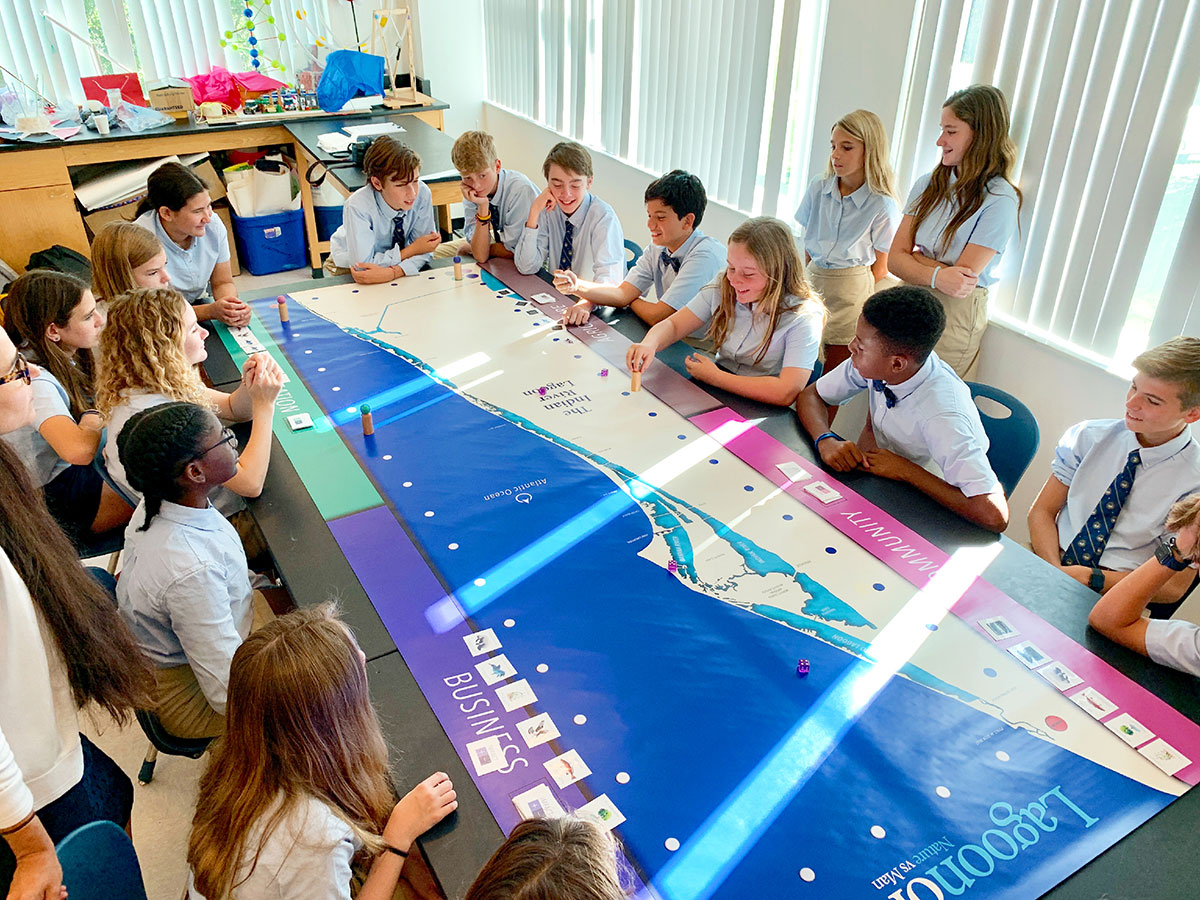
A group of middle school students is engaged in playing Lagoonology, a game about the Indian River Lagoon that comes with a room-sized gameboard. JOHN BUCK PHOTOS
Middle school students learn history and ecology of the lagoon while having fun
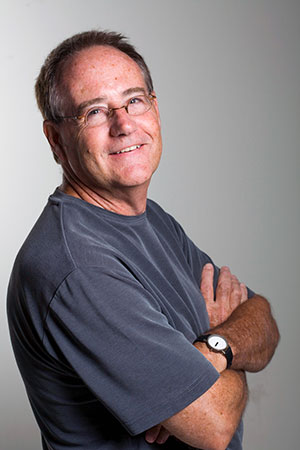
Retired Eastman Kodak photographer and ad agency owner John Buck created Lagoonology to do his part in helping the Indian River Lagoon.
John Buck entertains, teaches and engages classrooms of middle school students for an hour with nary a screen in sight.
How is the miracle achieved? The feat is due to Lagoonology, the interactive, room-size board game he invented.
At the heart of the game is a map — a huge map — of the Indian River Lagoon. Teams of four to 24 students gather
around the 35-by-120-inch board, with each team representing the real-life major lagoon disruptors of Agriculture, Community, Business and Recreation. As they go around the board, they pick up action cards that result in gaining or losing assets, determined by reading the impact cards.
“The goal is not to lose assets,” Buck explained. “The team with the most assets wins, but, in reality everyone wins because they learn so much about the Indian River that they didn’t know.”
It’s not all fun and games, however. The game was created with an extensive curriculum that meets Next Generation Science Standards, used to comprehensively educate students on challenges facing the Indian River.
“We want to reach the middle school students, because they are the future stakeholders,” Buck said.
 MASTER’S THESIS BEGINNINGS
MASTER’S THESIS BEGINNINGS
The seed for Lagoonology was planted in 1999 when Buck was working on his master’s thesis at Ohio State University, an exercise that included the development of a large board game about rivers. After graduation, he stored the game in his closet and went on with his life, until one day partner Julie Shorrock happened upon it and suggested he should resurrect it, but this time focus on the Indian River Lagoon, an internationally significant estuary that is struggling to survive under the pressures of Florida’s growth.
Buck had both the interest and the background to pursue the idea.
“We cross the Indian River all day long, so it is part of our lives,” the Rockledge resident said.
Before retiring to Brevard, Buck owned an ad agency in Rochester, New York, where his job with Eastman Kodak Co. took him to 60 countries, so he was good with the design phase of game developing.
Shorrock, who was a director of diagnostic imaging for a busy multimodality medical center, handles Lagoonology business.
Buck sought help from the Marine Resources Council for the gist of the game.
“They helped develop the meat of the game, which is the Q&As,” he said.
While game cards are written in conversational, kid-friendly language, the curriculum is detailed and based on input from experts at Brevard County Schools.
PART OF A CURRICULUM
The game is the fifth part of a six-unit curriculum that explores lagoon history, its economic impact and includes assignments and videos.
“By the time the students get to play the game, they are very familiar with the Indian River,” Buck said. “It’s a fun way to wrap up the lessons.”
The sixth unit explores lagoon-themed career and volunteer opportunities and discusses how students can champion the lagoon through their government representatives.
“Students are challenged to be a part of finding creative, dynamic ways to improve the Indian River’s future,” Buck said.
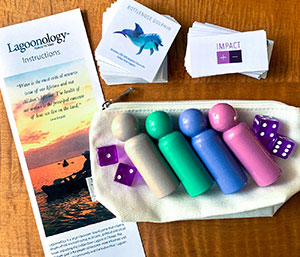
Lagoonology playing pieces were created and produced in Brevard. Made to be rolled up for storage after playing, Lagoonology’s game board, right, was created to withstand years of play.
Buck and Shorrock brought Lagoonology to life over the kitchen table, creating the laminated cards that fuel the action and the wooden pegs that circulate the board.
“It’s as mom-and-pop as you can get,” Buck said.
Kendall Signs in Rockledge fashioned the exterior-grade vinyl playing surface from Buck’s artwork. The board is made to withstand plenty of play.
“It’s meant to be used over and over again,” Buck added.
With 700 middle schools in the counties bordering the Indian River Lagoon, Buck has a significant customer base. A tabletop version, which measures 21-by-72 inches, is aimed at homeschooling families. The games, together with the curriculum, retail for $650 for the classroom model and $500 for the tabletop unit. Units without curriculum cost $300 less.
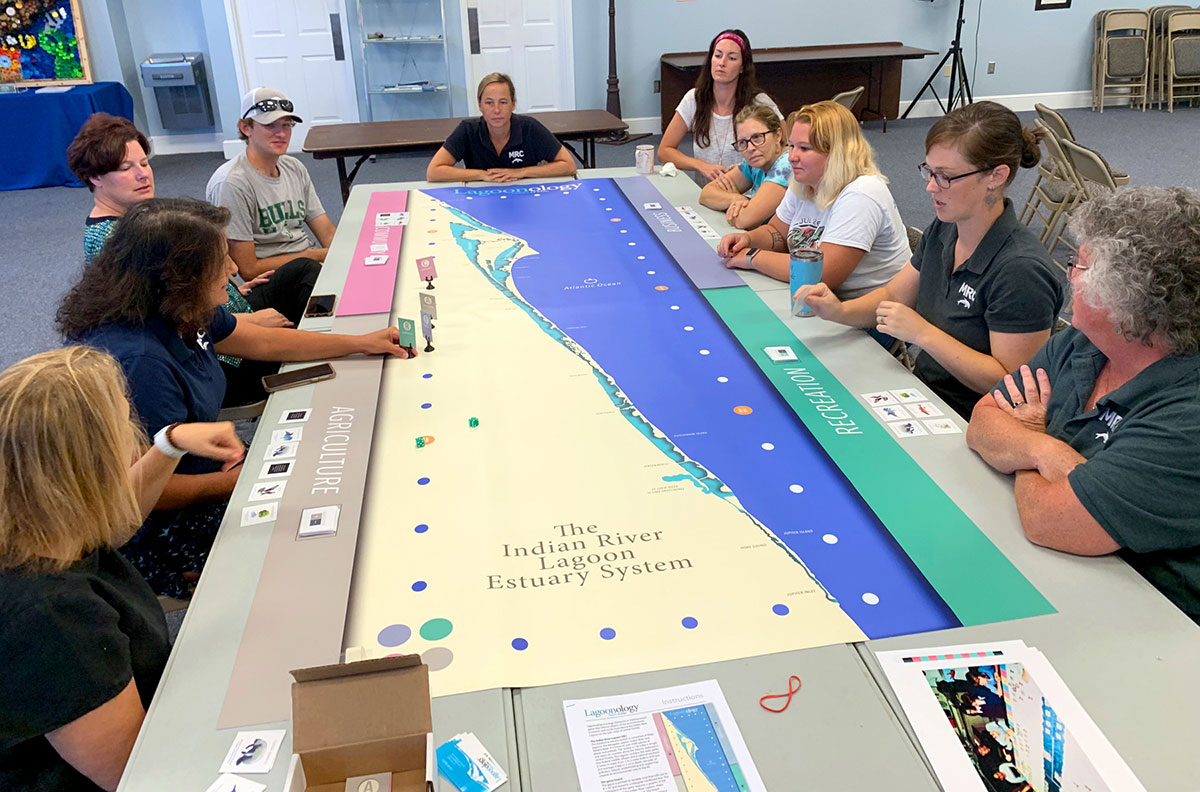
Staff at the Marine Resources Council tries out the game. While aimed at middle school students, Lagoonology has proven popular with adults, too.
NOT ONLY FOR STUDENTS
In addition to schools, unexpected customers have sought Lagoonology.
“We have sold many of the games to departments of natural resources, stormwater departments and other concerned environmental organizations,” Buck said.
The City of Cocoa Beach, for example, purchased two sets that, given the durability of the game and the Indian River’s long-term woes, should see plenty of use.
“You can use it for the next 10 years, because the problems are still going to be around,” Buck said.
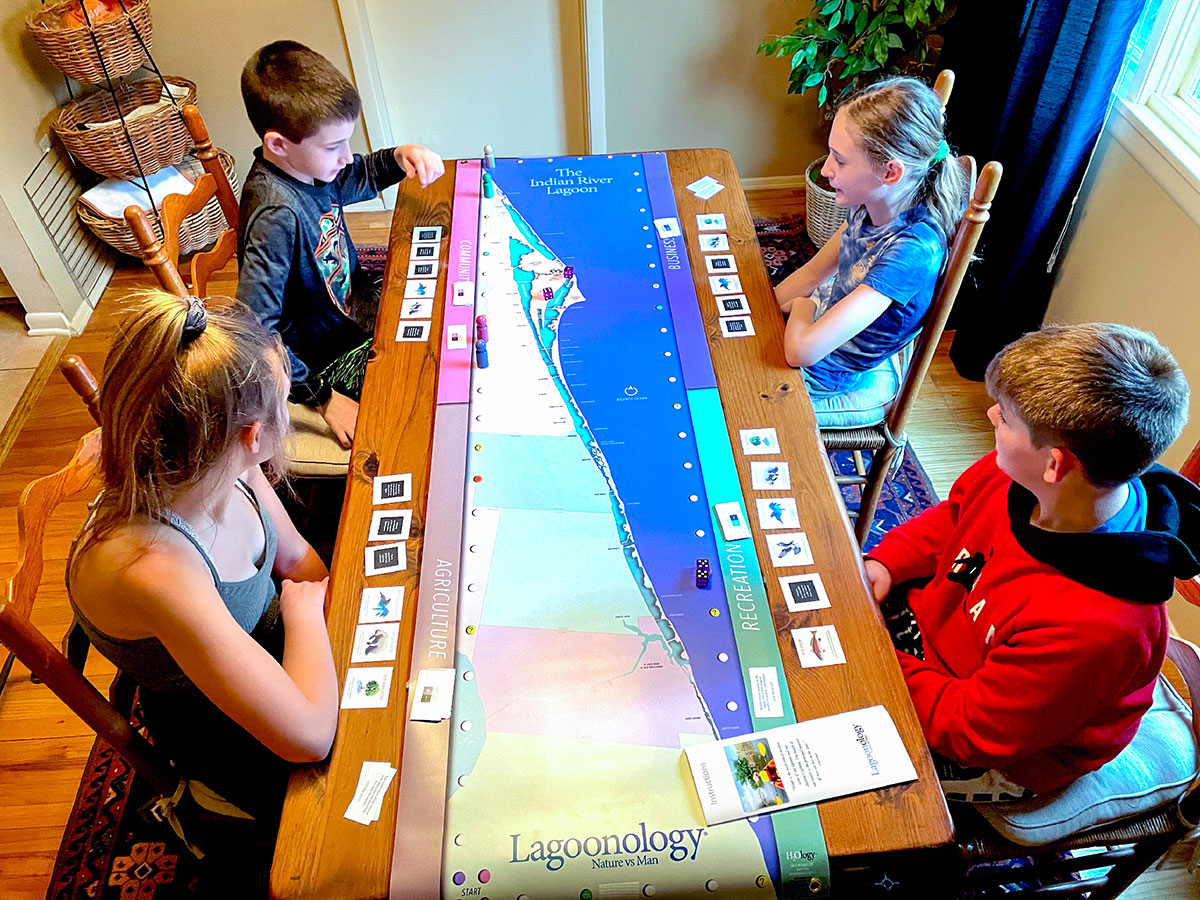
A table top version of the game is perfect for home-schoolers.
The council has incorporated the game into its summer camps and in classroom instruction around the county.
“The students are always surprised at what they learn by participating and are encouraged to do to their part to help save the lagoon,” said Leesa Souto, who had a long association with the Marine Resources Council.
Feedback from Vero Beach’s Environmental Learning Center stated Lagoonology is “a great learning tool,” and a seventh grader who played the game gave it the ultimate compliment with “I think it’s really fun!”
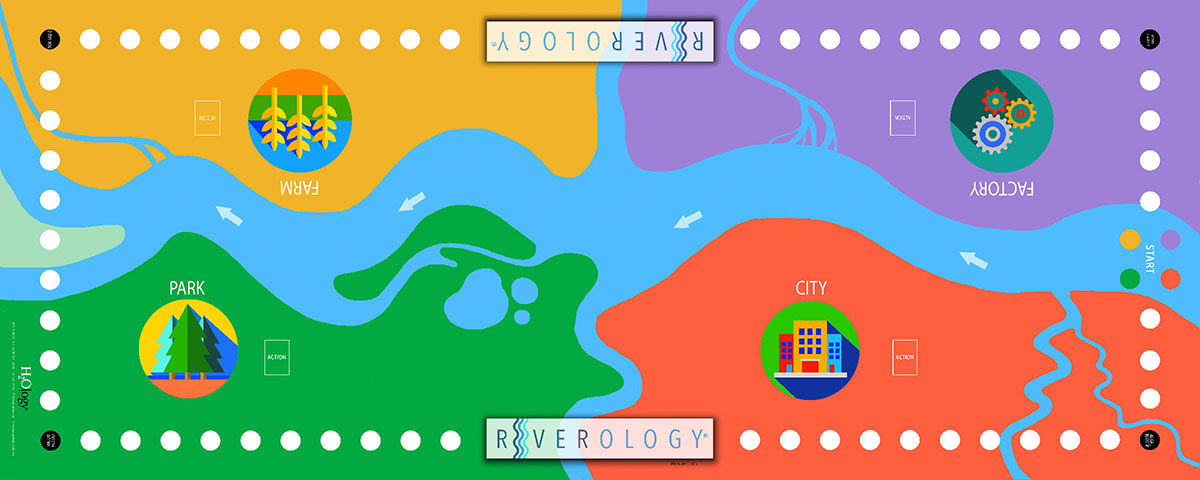
Riverology, which John Buck created as part of his master’s thesis at Ohio State University, is both precursor and successor of Lagoonology. Buck is working on marketing the game concept.
While Buck and Shorrock are at best breaking even with the game, they are enthusiastic about the concept. They are considering a similar game that looks at the challenges facing lakes in the Sunshine State after receiving interest from Florida Gulf Coast University. With more than 250,000 rivers in this country, Riverology is also in the works, for the couple firmly believes their games can be game changers to these beleaguered bodies of water.
“This is the story of two citizens who want to help,” Buck said.
Visit www.H2ologygames.com for more information.
It’s in the cards …
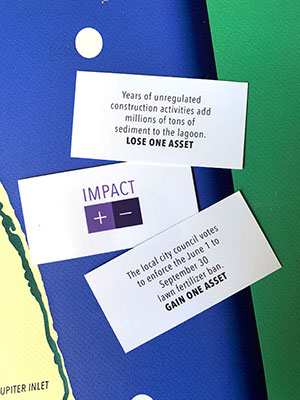
ACTION CARDS
• To play Lagoonology, students roll dice to collect Action Cards that are either positive or negative.
POSITIVE CARDS
• Investing $1 in Lagoon restoration returns $33 to the regional economy. All teams gain one asset.
• A project to propagate and restore seagrasses by citizen-scientists is successful. Gain one asset.
NEGATIVE CARDS
• A local marina accidentally discharges marine gas and oil into the Lagoon, killing fishes and invertebrates. Lose one asset.
• Medications like Tylenol are discarded or flushed and end up in the Lagoon. Lose one asset.

Maria Sonnenberg
Maria is a prolific writer and proofer for Space Coast Living and an adjunct professor at Florida Institute of Technology’s Nathan M. Bisk College of Business. When not writing, teaching or traveling, she can be found waging a one-woman war against her lawn and futilely attempting to maintain order among the chaos of a pack of extremely clueless wirehair dachshunds and an angst-driven basset hound.




